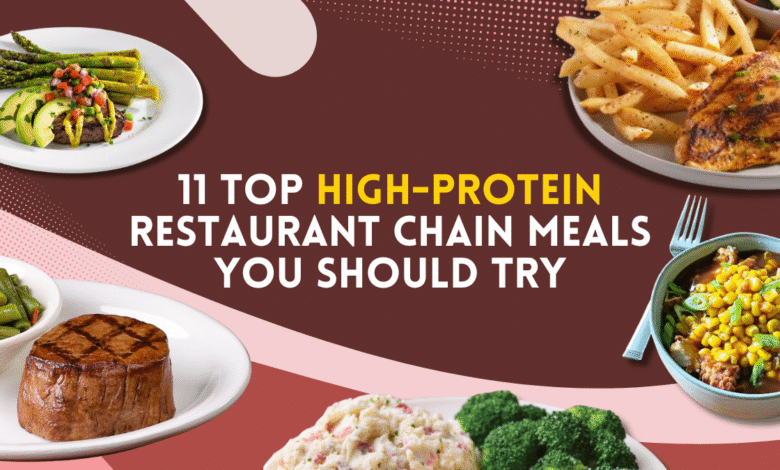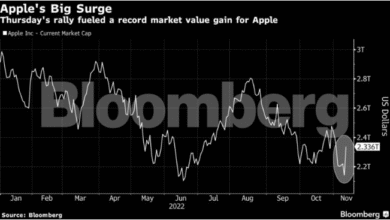Protein Trends in Restaurants: Boosting Sales in 2025

The rise of Protein Trends in Restaurants is transforming the dining landscape, as more establishments cater to the growing demand for nutritious meals. With a remarkable 28.4% of U.S. restaurant menus now highlighting protein, up from a mere 5.9% a decade ago, it’s clear that consumers are prioritizing protein-rich menu options like never before. This surge in restaurant protein popularity is fueled by diners’ desires for high protein dining experiences that align with their health goals. From protein-packed meals at fast-casual chains to specialized smoothies at juice bars, eateries are responding to the shift in consumer preferences with innovative, healthy dining trends. As a result, the emphasis on protein not only enhances menu variety but also reflects a larger movement towards wellness in the food industry.
As consumer preferences evolve, the focus on high-quality protein offerings is becoming a defining feature in the restaurant sector. Dining establishments are increasingly showcasing nutritious options that meet the needs of health-conscious diners, leading to a notable increase in high-protein choices across menus. This movement underscores a broader shift towards functional dining experiences, where restaurant-goers seek out meals that not only satisfy hunger but also contribute to their overall health and fitness objectives. By incorporating protein-rich selections, restaurants are not only appealing to a trend but also making strides in healthy culinary practices that resonate with modern consumers. Hence, as the protein-centric revolution continues, we are witnessing an inspiring transformation in how restaurants approach their food offerings.
The Surge of Protein-Rich Menu Options in Restaurants
In recent years, restaurants have witnessed a remarkable shift towards protein-rich menu options, reflecting the growing consumer demand for high-protein dining. A staggering 28.4% of U.S. restaurant menus now proudly feature the term “protein,” a significant increase from just 5.9% a decade ago. This trend is not only indicative of changing dietary preferences but also aligns with health-focused lifestyles that prioritize nutrition and wellness. As diners become more aware of the benefits of protein, eateries are responding by diversifying their offerings to include a variety of protein-packed meals, catering to fitness enthusiasts and health-conscious individuals alike.
Chains like Starbucks and Chick-fil-A are at the forefront of this movement, actively promoting their protein-rich options to attract a clientele that seeks both taste and health benefits. With consumers increasingly gravitating towards meals that help them meet their daily protein goals, restaurants are creatively incorporating ingredients like lean meats, legumes, and high-protein grains into their dishes. This focus on protein not only enhances the nutritional profile of menu items but also positions these restaurants as leaders in healthy dining trends, tapping into a lucrative market that values both convenience and dietary needs.
Restaurant Protein Popularity: Catering to Health-Conscious Consumers
The popularity of protein in restaurants echoes a broader societal shift towards health-conscious dining. Diners are now more informed than ever about nutrition, actively seeking out protein-packed meals that support their fitness and wellness regimes. With 28.4% of menus highlighting protein, restaurants can no longer afford to overlook this growing trend. Eateries that effectively cater to these preferences stand to benefit from increased patronage, drawing in consumers who prioritize their health and physical well-being.
Additionally, the appeal of high-protein dining extends beyond traditional menu items. Restaurants are innovating by introducing creative options such as protein-infused drinks and snacks. Smoothie King exemplifies this approach, where protein has always been a menu cornerstone, evolving to meet the needs of its health-aware customers. By integrating more protein into beverages and snacks, establishments can tap into the convenience factor that today’s consumers crave, ensuring they remain at the forefront of healthy dining trends.
High Protein Dining: A Consumer Trend on the Rise
High protein dining is not just a fleeting fad; it represents a significant paradigm shift in consumer behavior. As noted by Datassential, a hefty projection of over 40% of U.S. eateries incorporating protein into their menus by 2029 highlights the trend’s longevity and significance. This increase in protein awareness is largely driven by consumers who desire to enhance their physical performance and overall health, leading restaurants to rethink and revise their culinary offerings.
In response to this trend, restaurants are now introducing a diverse range of options that appeal to both fitness enthusiasts and casual diners. From nachos crowned with various protein choices to innovative egg-based dishes, the menu possibilities are virtually endless. By adopting a protein-centric approach, restaurants can better accommodate a health-focused clientele, positioning themselves favorably in an increasingly competitive market.
Protein-Packed Meals: The Future of Restaurant Menus
Protein-packed meals are emerging as a staple of modern restaurant menus, aligning perfectly with the health-conscious desires of today’s diners. This evolving culinary landscape encourages chefs and restaurant owners to explore innovative ways to incorporate protein into dishes that not only taste great but also offer nutritional benefits. The shift towards protein-rich offerings is crucial for attracting a demographic that prioritizes health and fitness, and restaurants are rising to the occasion.
The innovative spirit of the restaurant industry is evident in the variety of high-protein options now available. From plant-based proteins to traditional meats, diners can choose meals that align with their dietary preferences, making it easier to maintain healthy eating habits. This focus not only enhances the dining experience but also encourages repeat visits as consumers recognize the restaurant’s commitment to their health goals.
Healthy Dining Trends: How Restaurants are Adapting
The growing awareness of healthy dining trends has compelled restaurants to adapt their menus to satisfy the evolving preferences of their customers. With protein becoming a significant focus, establishments are introducing a new wave of nutritious offerings aimed at those seeking to improve their dietary choices. As a result, we see more varied high-protein options, which not only meet health guidelines but also cater to the taste buds of a diverse clientele.
This adaptation goes beyond mere novelty; it reflects a deeper understanding of wellness among consumers. Chains like Panda Express are reimagining their traditional dishes to include more protein and nutrient-dense ingredients, thereby meeting the demands of health-conscious diners. Restaurants that embrace these healthy dining trends are poised to capitalize on a lucrative market segment that values nutrition as much as flavor.
The Role of Protein in the Modern Dining Experience
In the modern dining landscape, protein plays a pivotal role in shaping consumer experiences and expectations. Diners today are not only looking for delicious meals but also for those that fit their health and fitness objectives. The increasing prominence of protein on restaurant menus signifies a shift towards more thoughtful dining choices. High protein options are no longer limited to specialty diets but have become central to the culinary offerings of mainstream restaurants.
This trend reflects a broader societal movement towards healthier lifestyles, encouraging restaurants to curate menus that emphasize protein quality and diversity. By providing a range of choices, from animal-based proteins to plant-powered alternatives, restaurants can cater to various dietary needs while also enhancing the overall dining experience for their patrons.
Innovations in Protein-Packed Meals: A Culinary Evolution
Innovations in the culinary world often hinge on changing consumer preferences, and the rise of protein-packed meals is a prime example. Restaurants are undergoing a culinary evolution, driven by a demand for high-protein options that not only fuel the body but also tantalize the taste buds. This evolving narrative invites chefs to push the boundaries of creativity, crafting meals that fuse health benefits with gourmet appeal.
From unique protein bars to egg-focused dishes, the innovation within menu design highlights the importance of protein in the dining experience. Such creativity not only attracts fitness-oriented consumers but also excites a broader audience seeking new and flavorful ways to meet their nutritional requirements. As this trend continues to grow, restaurants that embrace such innovation will undoubtedly thrive in a competitive market.
Exploring The Convenience Factor in Protein-Rich Dishes
As lifestyles grow increasingly fast-paced, convenience becomes paramount in dining choices. This is where the popularity of protein-rich dishes truly shines, offering consumers quick yet nutritious options that align with their on-the-go lifestyles. Smoothie King, notably a leader in this space, has maintained a menu rich in protein-packed beverages tailored towards busy individuals looking to maximize their health without sacrificing time.
Restaurants that prioritize convenience in their protein offerings not only cater to immediate consumer needs but also build brand loyalty. By providing accessible, high-protein options, these establishments establish themselves as go-to spots for health-focused diners looking for something quick, sustaining, and delicious. As consumer preferences continue to shift towards convenience, the importance of protein-rich meals in restaurant menus will only expand.
Future Predictions: Protein Trends in Restaurants
Looking forward, the protein trend in restaurants shows no signs of slowing down. Experts predict that by 2029, the emphasis on protein will be a defining characteristic of menus, with over 40% of eateries spotlighting it prominently. This forecast underscores the importance of aligning culinary offerings with emerging consumer health trends and dietary preferences, which are increasingly steering dining choices toward higher protein content.
As the restaurant industry adapts to these changes, businesses will need to be agile in their menu development to meet growing expectations. Establishments that integrate protein-rich options, combined with innovative culinary techniques, will likely capture a larger share of the market and establish themselves as leaders in this evolving food landscape. The focus on protein will not only be about satisfying taste but will also resonate with consumers’ aspirations for better health, making it a cornerstone of successful restaurant strategies in the coming years.
Frequently Asked Questions
What are the latest protein trends in restaurants?
The latest protein trends in restaurants show a significant increase in the emphasis on protein-rich menu options, with 28.4% of U.S. restaurant menus highlighting ‘protein,’ a sharp rise from just 5.9% a decade ago. This trend reflects the growing consumer interest in high protein dining, which is expected to continue, potentially exceeding 40% by 2029.
How are restaurants incorporating protein-packed meals into their menus?
Restaurants are incorporating protein-packed meals in various creative ways, including introducing customizable options like nachos with a choice of protein and promoting specific items such as high-protein egg dishes and restaurant-made protein bars. This shift aligns with the increasing demand for protein-rich menu options among health-conscious diners.
Why are protein-rich menu options becoming more popular in restaurants?
Protein-rich menu options are gaining popularity in restaurants due to the rising consumer obsession with protein as part of healthy dining trends. Diners are increasingly focused on high-protein meals to boost their fitness and wellness, prompting restaurants to adapt their offerings to attract this health-conscious demographic.
What type of customers are driving the protein popularity in restaurants?
The protein popularity in restaurants is largely driven by fitness-focused consumers, such as individuals who work out regularly and seek to meet their daily protein goals for better health and physique. This trend is evident with eateries like Starbucks and Smoothie King enhancing their menus with protein-packed choices to cater to this audience.
How is convenience influencing protein trends in restaurant dining?
Convenience is greatly influencing protein trends in restaurant dining, as consumers often prefer quick, protein-rich options, especially in the form of beverages. Smoothie King exemplifies this by consistently offering protein-packed smoothies while expanding their menu to target consumers on GLP-1 medications for weight management, thus combining health and convenience.
What can we expect from the future of protein trends in restaurants?
The future of protein trends in restaurants appears promising, with forecasts suggesting that more than 40% of menus will highlight protein by 2029. As restaurants adapt to consumer preferences for healthier options, we can expect an increase in protein-rich menu items, from traditional dishes to innovative, high-protein creations.
| Key Point | Details |
|---|---|
| Growing Demand for Protein | 28.4% of U.S. restaurant menus now emphasize protein, a significant increase from 5.9% ten years ago. |
| Consumer Behavior | Health-conscious consumers, like Jared Hutkowski, are increasingly prioritizing protein in their diets. |
| Future Predictions | By 2029, over 40% of restaurant menus are expected to feature protein prominently. |
| Convenience Trends | Consumers prefer convenient, protein-packed options such as beverages and quick meals. |
| Innovative Menu Items | Restaurants are introducing varied protein options like nachos with protein choices and high-protein egg dishes. |
Summary
Protein Trends in Restaurants indicate a significant shift in consumer preferences, with a strong focus on protein-rich menu options. As dining establishments adapt to meet the nutritional desires of health-oriented consumers, the trend shows potential for continued growth, reflecting an evolving landscape in the food industry.



